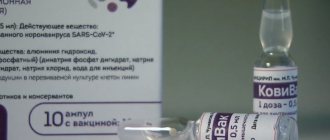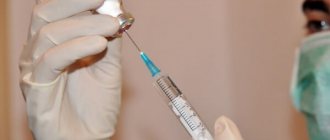Fortunately, in our time, the diagnosis of “ diabetes mellitus ” does not sound like a death sentence; moreover, the main efforts of endocrinologists are aimed at maintaining and improving the quality of life of their patients. Judge for yourself, today in the arsenal of an endocrinologist there are glucometers, high-quality and effective insulin, means for its administration - insulin syringes, syringe pens and disposable needles for them. So, let's talk about how to inject insulin, what is the technique for administering insulin - that is, how to properly administer insulin injections yourself.
“Diabetes is not a disease, but a way of life. Having diabetes is like driving a car on a busy highway - you need to know the rules of the road.” In addition to a balanced diet, self-monitoring of blood glucose and competent insulin therapy, these rules also include insulin injection technique
. After all, it is not enough to select adequate doses of insulin; it is also necessary to correctly deliver insulin to the body. And here there are many nuances that a patient with diabetes needs to know and observe.
Insulin injection technique
To ensure high-quality action, insulin must be injected into the subcutaneous fat. How to ensure proper insulin administration?
The injection sites must be changed, otherwise changes and compactions will appear, which, in addition to a cosmetic defect, impede the absorption of insulin, which can lead to a significant increase in blood sugar. How to avoid this?
It is necessary to change disposable insulin needles after each injection. Repeated use of disposable insulin needles contributes to the appearance of lipodystrophy, not to mention the increased pain of injections. How to minimize pain from injections?
We addressed these questions to Tatyana Timofeevna Konovalova
, endocrinologist of the first category, candidate of medical sciences.
Painless insertion technique
To inject at home, you will need an insulin syringe. The substance should be injected under the fat layer. Its fastest absorption occurs in places such as the stomach or shoulder. It is less effective to inject insulin into the area above the buttocks and above the knee.
Technique for subcutaneous administration of short and long-acting insulin.
- Fill the pen or syringe with the required dose of medication.
- If necessary, form a skin fold on the abdomen or shoulder. Do this with your thumb and index finger. Try to capture only the fiber under the skin.
- With a quick jerk, insert the needle at an angle of 45 or 90°. The painlessness of the injection depends on its speed.
- Slowly press down on the plunger of the syringe.
- After 10 seconds, remove the needle from the skin.
Accelerate the syringe 10 cm to the target. Do this as carefully as possible to avoid the tool falling out of your hands. Acceleration is easier to achieve if you move your hand at the same time as your forearm. After this, the wrist is connected to the process. It is this that will direct the tip of the needle to the puncture point.
Make sure that after inserting the needle, the syringe plunger is pressed all the way. This will ensure effective insulin injection.
What are the best places to inject insulin?
The most commonly recommended locations for administering insulin are the abdomen, thighs, and upper buttocks. You can inject insulin correctly using the skin fold method
.
I would like to immediately draw your attention to the fact that insulin after injection must get under the skin,
those. into the subcutaneous tissue. When insulin enters deeper layers (muscle), it begins to act faster, and this can lead to a sharp drop in blood sugar levels.
If the needle was not inserted deep enough, then insulin can be administered intradermally, which is also a gross mistake, since insulin will be absorbed much more slowly and will not have the expected hypoglycemic effect. It should also be remembered that insulin is absorbed most quickly from the subcutaneous tissue of the abdomen.
, slower - from the area of the buttocks and thighs.
How to inject insulin during pregnancy
Women who have high sugar levels during pregnancy are first prescribed a special diet. If changes in diet are not enough to normalize glucose levels, you still need to give injections. No sugar-lowering pills should be used during pregnancy.
Hundreds of thousands of women have already undergone insulin injections during pregnancy. It has been proven to be safe for children. On the other hand, ignoring high blood sugar in pregnant women can create problems for both mother and fetus.
How many times a day is insulin typically administered to pregnant women?
This issue must be resolved individually for each patient, together with her attending physician. You may need one to five insulin injections per day. The injection schedule and dose depend on the severity of glucose metabolism disorders. Read more in the articles “Diabetes in Pregnancy” and “Gestational Diabetes”.
Is it possible to inject insulin without forming a skin fold?
It is possible to administer insulin without forming a skin fold; this option is possible in children and adults with a large thickness of subcutaneous tissue. In this case, you should choose the smallest and thinnest BD Micro-Fine Plus needle with a needle length of 5 mm and be sure to consult with your doctor and discuss with him the best places for injections. For other patients, it is better to use needles with a length of 8 and 12.7 mm and inject with the formation of a skin fold. The endocrinologist you see will help you choose the right needle length.
Where to inject extended-release insulin
Typically, long-acting insulin is injected into the thigh, upper arm, or abdomen. The rate of absorption of the drug into the blood depends on the injection site. Read more in the article “Insulin administration: where and how to inject correctly.” Learn how to inject with an insulin syringe or pen absolutely painlessly.
When giving long-acting insulin injections, you need to eat foods approved for diabetics. Taking high doses and not following a diet is a bad idea. This approach leads to poor health, as well as the development of chronic complications of diabetes.
Read about dietary features depending on the diagnosis:
- Type 2 diabetes - mild or severe
- Type 1 diabetes - in adults and children
- Dietary table No. 9 - balanced
- Menu for the week - sample
How many times a day to inject and at what time
It is officially recommended to inject long-acting insulin once a day, at the same time. Deviations of 2-3 hours are allowed. However, in practice, it is undesirable to limit yourself to one injection of long-acting insulin per day. This even applies to the drug Tresiba, which lasts longer than others, and even more so, all other drugs. Give two injections, morning and evening.
There are many diabetics who give themselves long-acting insulin even three times a day:
- in the morning,
- for the night,
- still in the middle of the day, around lunchtime.
This method works well because the dose of fast insulin for food is reduced, and there are more problems with it than with long-acting insulin. Three injections per day is an amateurish scheme. But there should definitely be at least two of these injections. Do not limit yourself to one daily injection of a large dose.
What time to inject? Everything is simple here. The main problem with long-acting insulin is that it does not last well from evening to morning. Therefore, the evening injection should be as late as possible before bedtime. And the morning one - as soon as you wake up. Because the level of insulin in the blood has dropped overnight, and it is advisable to increase it quickly. Well, the third injection around lunchtime - you can try it to see if you like this scheme.
Can disposable insulin needles be reused multiple times?
The packaging of pen needles states that they are intended for single use. How many times can one needle actually be used? What are the dangers of reusing a needle?
Recently, needles for syringe pens for injecting insulin have become so thin and small that patients usually do not experience any discomfort from the injection. However, most people use a disposable needle for several injections, and sometimes inject with the same syringe for several weeks. What is the danger here?
Firstly
, all modern needles are designed for a single injection of insulin.
To do this, each needle is marked, prohibiting its reuse. In this case, any manufacturer guarantees the safety of their use only for one-time use .
Secondly
, the needles are so thin that even after the first injection the tip “breaks”, which upon repeated use leads to injury to the skin, although there may not be any painful sensations. In this case, the skin is literally torn by the modified needle tip.
Third
, insulin remains in the lumen of the needle after the injection, which, when dried, forms crystals that noticeably narrow the lumen of the needle. It takes more effort to push through this “plug”, which ultimately leads to the breakdown of an expensive syringe pen.
And the most important thing:
You cannot leave the syringe pen with the needle screwed on, as access to the cartridge opens and insulin leaks out, which means the expected effect of the injection is not achieved.
My personal opinion:
The reason for reusing disposable needles is due to savings, as well as the fear that needles cannot be purchased on time for various reasons. With a frequency of 5 injections per day, you have to spend a few extra minutes changing the needle.
But in this case, I want to remind you that diabetes is not an ordinary disease. A person faced with this problem is forced to change his entire lifestyle, take literally every little thing more responsibly and seriously: follow a diet, measure blood sugar levels, check shoes and, no less important, use disposable needles once. You can live a normal and fulfilling life by paying equal attention to every detail.
Types of lipodystrophies.
Which needles are suitable for my pen?
I recommend BD Micro-Fine Plus needles to my patients, as they have a single universal thread and fit syringe pens from leading manufacturers. Information about the compatibility of needles and the pen you are using can be found on the packaging and in the instructions included in each package of needles.
How to administer insulin?
To maintain optimal concentrations of the hormone, a diabetic is forced to take injections for life. Special devices have been created for this.
- Standard syringes. Even if the patient knows how to give insulin injections correctly, you cannot use a regular syringe for this, as the risk of overdose increases.
- Insulin syringes. A simple, convenient tool. This is a small syringe with a smooth piston stroke, which ensures easy, painless administration of the hormone. Unlike conventional syringes, the division scale on them does not display the injected milliliters, but units of insulin.
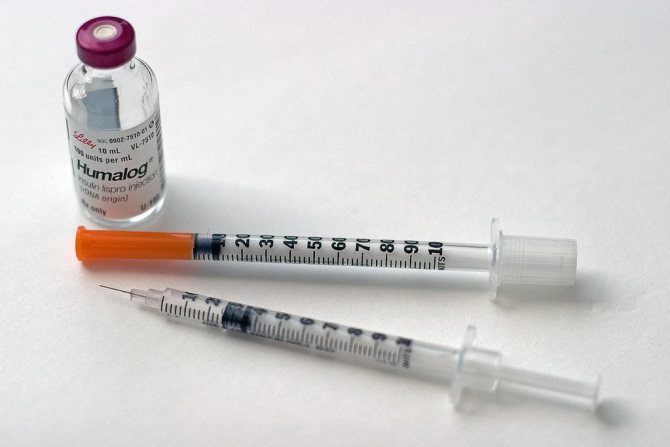
The needle can be removable or integrated. It is used once, so the patient always needs to have a supply of devices. The downside is that manipulation requires good lighting, and the syringes are not convenient to carry. There are more convenient devices for administering insulin:
- Syringe pens. The optimal solution for a patient suffering from diabetes of any type. Handles are available in two types. Disposable - involves only one administration, after which it must be disposed of. Reusable - the cartridge can be changed. This is a convenient device and easy to carry with you. Injecting yourself is not difficult. Disadvantages - possible breakdown of the mechanism and leakage of medication. When purchasing a new cartridge, you should check the markings to ensure that it fits the specific pen model.
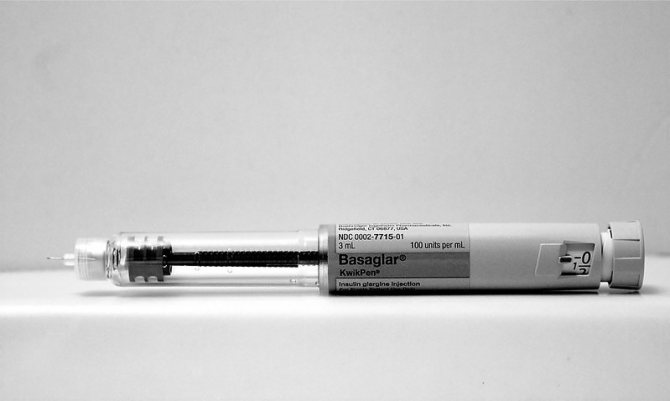
- Insulin pump. A modern technological device that allows a person not to give injections. The pump is attached to the body in the abdominal area. The hormone automatically enters the bloodstream through a special system - a needle implanted under the skin and a tube leading to the pump itself. The injection time and volume of the hormonal drug are adjusted individually to the patient. The disadvantage is the high cost of the device.
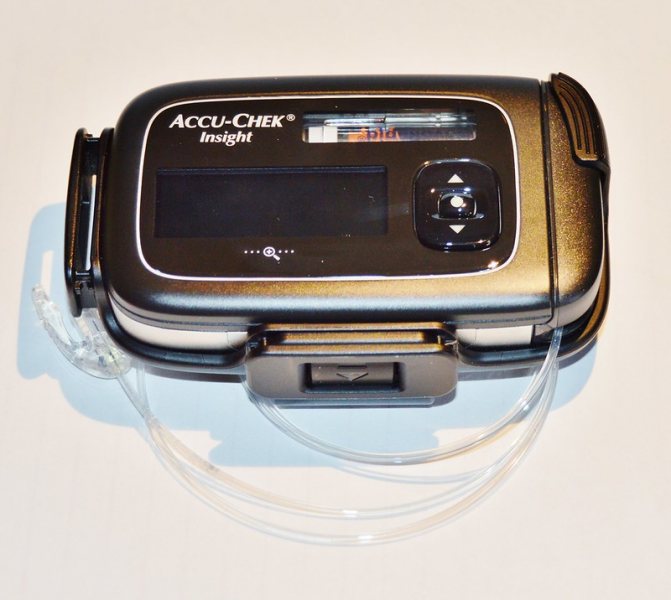
Why does it sometimes hurt to inject insulin?
The main reason is the reuse of disposable needles. When you inject insulin for the first time with a new needle, the tip of the needle becomes deformed, which is noticeable under high magnification. In this case, tissues are injured, causing pain and hemorrhages at the site of insulin injection. Remember to change the needle after each injection.
| new needle, magnification x370 times* | used needle, magnification x370 times* |
*Photos by Dieter Look and Kenneth Strauss: “Nadeln mehrfach verwenden?” Diabetes Journal 1998, 10: S. 31-34
Sometimes redness and hemorrhages occur after the injection. With what it can be connected?
Redness at the injection site can also be associated with repeated use of disposable needles, since after the first use the silicone coating is erased from the surface of the needle and direct contact of metal with tissue can cause an allergic reaction accompanied by redness.
Dear patients, do not forget and try to change the needle more often, after each injection!
See also: Insulin therapy
The doctor's consultation
,
articles about diabetes
Selection of the dose of extended-release insulin for the day
Injections of long-acting insulin are given in the morning, every day, to maintain normal sugar levels on an empty stomach. These shots are not intended to cover food eaten. Lantus, Toujeo, Levemir and Tresiba should not compensate for the increase in blood glucose after meals. Also, do not try to quickly reduce high sugar levels with their help. The average types of insulin Protafan, Humulin NPH, Insuman Basal, Biosulin N, Rinsulin NPH also cannot help in solving these problems. To deal with high sugar, you need to inject quick drugs - Actrapid, Humalog, Apidra or NovoRapid.
Why are long-acting insulin injections needed in the morning? They support the pancreas, reducing the load on it. Thanks to this, in some diabetics the pancreas itself normalizes sugar after eating. However, you should not count on this in advance. It is highly likely that you will need rapid insulin injections before meals in addition to long-acting insulin injections in the morning.
A suitable dose of long-acting insulin in the morning is one at which “hungry” sugar remains more or less normal throughout the day, within the target range of 3.8-5.5 mmol/l, and hardly fluctuates. In other words, the morning dose of long-acting insulin should keep normal sugar levels in a fasting state. It has nothing to do with the food you eat.
To calculate the correct dose, you will have to fast a little. Unfortunately, this cannot be avoided. Next you will understand why. Obviously, it is better to fast on a quiet day off.
On the day of the experiment, you need to skip breakfast and lunch, but you can have dinner. If you are taking metformin, continue to do so and do not need to take a break. For diabetics who have not yet given up taking harmful medications Diabeton, Maninil, Amaryl, it is time to finally do so.
Measure your sugar as soon as you wake up, then again after 1 hour and then 3 more times with an interval of 3.5-4 hours. The last time you measure your glucose level is 11.5 to 13 hours after getting up in the morning. Now you can have dinner if you really want to, or go to bed and continue fasting until the next morning.
Daily measurements will give you an understanding of how your sugar changes on an empty stomach. Drink water or herbal tea, do not dry fast. By the time you measure your blood glucose level 1 hour after waking up, the dawn phenomenon has completely ceased to operate. You are interested in the minimum sugar value during the day. You will inject Levemir, Lantus or Tresiba in such a way as to eliminate the difference between this minimum value and 5.0 mmol/l.
In practice, few diabetics are willing to fast several times. Instead, a more or less suitable morning dose is selected by trial and error without fasting. Adults and adolescents with diabetes can start with 2 units and then increase the dose according to the situation in increments of one or two units. Children can start with 0.5 units. If suddenly diabetes occurs in an infant, then parents need to use diluted insulin.
Another such moment. Let's say you woke up in the morning, haven't had breakfast yet, immediately measured your sugar and it turned out to be elevated. In this case, you should inject not an increased dose, but your usual morning dose of long-acting insulin and plus some other amount of short-acting or ultra-short insulin. Rapid insulin is needed to normalize elevated sugar levels, as well as to compensate for the breakfast that you will now eat. The main thing is that you should not try to reduce high sugar levels in the morning with an increased dose of long-acting insulin. To do this, use another fast-acting drug; for more details, see types of insulin.
Let's calculate the morning dose of long-acting insulin
Below is a real example. A patient with moderate type 2 diabetes had an early dinner on Saturday and conducted a “hunger” experiment on Sunday.
Blood glucose results
| Time | Sugar level, mmol/l |
| 8:00 | 7,9 |
| 9:00 | 7,2 |
| 13:00 | 6,4 |
| 17:00 | 5,9 |
| 21:00 | 6,6 |
The patient's blood sugar has already dropped because he switched to a low-carbohydrate diet a few days ago. Now it's time to bring it back to normal with low-dose insulin injections. Therapy begins with calculating the correct dosage of Levemir, Lantus, Toujeo or Tresiba.
For patients with type 2 diabetes, doctors like to prescribe a dose of 10-20 units of extended-release insulin per day from the start, without going into their individual characteristics. Using this approach is strictly not recommended. Because in diabetics who follow a low-carb diet, a large dose of 10 units of long-acting insulin is highly likely to cause hypoglycemia.
The measurement data, which was taken at 8 a.m., can be used to select or adjust the dose of extended-release insulin at night. If a diabetic had had a late dinner yesterday, that day should have been excluded from the statistics.
By 9 o'clock the effect of the morning dawn phenomenon is almost over, and sugar naturally decreases. During the day, on an empty stomach, its minimum value was 5.9 mmol/l. Target range 4.0-5.5 mmol/L. To calculate the optimal dose of long-acting insulin, it is recommended to use a lower limit of 5.0 mmol/L. Difference: 5.9 mmol/l - 5.0 mmol/l = 0.9 mmol/l.
Next, you need to calculate the insulin sensitivity factor (ISF), taking into account the patient’s body weight. How to do this is described above, in the section on selecting the dose for the night. To get the starting morning dose, you need to divide 0.9 mmol/l by FCI.
The difference between the doses of extended-release insulin at night and in the morning
To calculate the starting dose for the night, the minimum difference in sugar levels in the morning on an empty stomach and the previous evening is used. Provided that the morning blood glucose level is consistently higher than the evening level. Otherwise, an injection of extended-release insulin at night is not required at all.
To calculate the starting dose of long-acting insulin in the morning, the minimum difference between sugar during the day on an empty stomach (during fasting) and the lower limit of normal is 5.0 mmol/l. If during a fasting day your glucose level drops below 5.0 mmol/l at least once, you do not need to inject extended-release insulin in the morning.
The insulin sensitivity factor is calculated the same for evening and morning injections.
Perhaps experiments will show that you do not need injections of Lantus, Toujeo, Levemir or Tresiba at night and/or in the morning. However, you may need short-acting or ultra-short-acting insulin before meals.
Most likely, the dose of long-acting insulin for a morning injection will be lower than for the night. In mild cases of type 2 diabetes, it is not necessary at all. In a fasting state, sugar during the day may turn out to be more or less normal even without the morning administration of extended insulin. Don't rely on it, but conduct an experiment and find out for sure.
It is advisable to repeat the experiment 1-2 more times with an interval of 1 week to clarify the morning dosage of Lantus, Toujeo, Levemir or Tresiba. During repeated experiments, the dose that was selected last time is administered in the morning. Then they skip breakfast and lunch and watch how glucose behaves in the blood on an empty stomach. It may turn out that the morning dose of extended-release insulin needs to be slightly increased or, conversely, reduced.
In principle, the new advanced insulin Tresiba can be injected once a day in the evening, and this will be enough. However, Dr. Bernstein says that it is still better to divide the dose of this drug into two injections per day. But there is no exact information yet in what proportion to divide.
Lantus, Toujeo and Levemir must be injected in the morning and evening. For these types of insulin, one injection per day is not enough, no matter what official medicine says. Medium insulin Protafan is not recommended at all, even if it is given out free of charge. The same applies to its analogues - Humulin NPH, Insuman Basal, Biosulin N, Rinsulin NPH
Do not try to suppress high glucose levels after meals using long-acting insulin. Short-acting or ultra-short-acting drugs are intended for this - Humalog, NovoRapid, Apidra and others. Long-acting insulin injections in the first half of the day cannot be used to correct high blood sugar in the morning on an empty stomach.
Should I eat after a long-acting insulin injection?
This formulation of the question means that the diabetic has an unacceptably low level of knowledge about insulin treatment. Please re-read the materials on the site again before you start giving injections. Understand the purpose of administering long-acting insulin at night and in the morning, and how the injections are related to meals. If you are too lazy to delve into it, improper treatment can cause severe hypoglycemia or simply not work.
How to lose weight
Insulin is a hormone that stimulates fat storage in the body and blocks weight loss. However, the effect of the injections depends on the dose of the drug. Start a low-carb diet and follow it carefully. This will reduce the dose of fast and long-acting insulin by 2-7 times, usually 4-5 times. Your chances of losing weight will increase significantly.
A low-carbohydrate diet and injections of low, carefully selected doses of insulin are the only effective way to treat diabetes. Your glucose levels will return to normal, even if you fail to lose significant weight. You can be assured that you will be able to control your diabetes well if you follow the recommendations diligently. Unfortunately, we can’t give any guarantees about losing weight yet.
Some patients reduce their insulin doses to lose weight even though their blood sugar is rising. Young women are especially guilty of this. You can do this only if you are ready to get acquainted with the complications of diabetes on the kidneys, legs and eyesight. Also, an early heart attack or stroke can be an unforgettable adventure.
How to inject long insulin when acetone is detected in the urine
Diabetics who follow a low-carb diet often have acetone (ketones) in their urine. This is not dangerous either for adults or for children as long as their sugar level is not higher than 8-9 mmol/l. You need to inject extended-release insulin based on your blood glucose levels. Detection of acetone in the urine should not be a reason to increase the dose of insulin if sugar remains normal.

Acetone is not something to be afraid of. It is not harmful or dangerous as long as the blood glucose level does not go off scale. In fact, it is fuel for the brain. You don't have to check it at all. Instead of testing your urine for acetone, focus on your blood glucose levels. Don't give a diabetic carbohydrates to remove acetone! Resist when doctors or relatives make such attempts.
Why is it not recommended to use the average insulin Protafan?
The so-called neutral Hagedorn protamine has been added to insulin Protafan, as well as to its analogues Humulin NPH, Insuman Basal, Biosulin N and Rinsulin NPH. This is an animal protein that is used to slow down the effect of the drug. It causes allergies more often than we would like. Many diabetics sooner or later have to undergo an X-ray examination with the introduction of a contrast fluid before surgery on the vessels that supply the heart or brain. Patients who used Protafan during this examination have an increased risk of severe allergic reactions with loss of consciousness and even death.
Newer long-acting insulins do not use Hagedorn's neutral protamine and do not cause the problems associated with it. Diabetics who follow a low-carbohydrate diet require relatively low doses of the hormone that lowers blood glucose. In such dosages, protafan acts no longer than 7-8 hours. It is not enough for the whole night to get normal sugar in the morning on an empty stomach. You also have to inject it 2 times during the day.
For these reasons, the average types of insulin Protafan, Humulin NPH, Insuman Basal, Biosulin N and Rinsulin NPH are inconvenient and not very safe. It is better to switch from them to Levemir, Lantus or Toujeo. And if finances allow, then use the newest extended-release insulin Tresiba.
Insulin injection sites
Many patients wonder where insulin can be injected. Typically, drugs are injected under the skin in the abdomen, thigh, buttock - these places are considered by doctors to be the most convenient and safe. It is also possible to inject insulin into the deltoid muscle of the shoulder if there is sufficient fat there. The injection site is selected according to the human body’s potential to absorb the drug, that is, the speed at which the drug moves into the blood. In addition, when choosing a place for an injection, you should take into account the speed of action of the drug.
- Novopen 4 syringe pen for which insulin
Is it possible to inject insulin into the buttock?
It is perfectly acceptable to give insulin injections into the buttocks if the patient is comfortable injecting the drug into this area of the body. The injection site is selected as follows. Mentally divide one buttock into 4 parts; an injection can be given in the upper outer quarter.
How to give a thigh injection correctly
Insulin injections in the leg are given in the front of the thigh from the groin area to the knee. Doctors advise injecting delayed-release insulin into the thigh. However, if the patient leads an active lifestyle or engages in heavy physical labor, the absorption of the drug will occur more actively.
How to properly inject insulin into the stomach
It is believed that the most suitable place for insulin injections is the abdominal area. The reasons why insulin is injected into the stomach are easily explained. This area has the largest amount of subcutaneous fat, which makes the injection itself almost painless. Also, when injected into the abdominal area, the drug is quickly absorbed by the body due to the presence of many blood vessels here. It is strictly forbidden to use the navel area and around it to administer insulin. Because there is a high probability of the needle hitting a nerve or large vessel. You need to step back 4 cm in each direction from the navel and give injections. It is advisable to cover the abdominal area as widely as possible in all directions, right up to the lateral surface of the body. Each time choose a new injection site, retreating at least 2 cm from the previous wound. The abdomen is excellent for administering short-acting or ultra-short-acting insulin.
